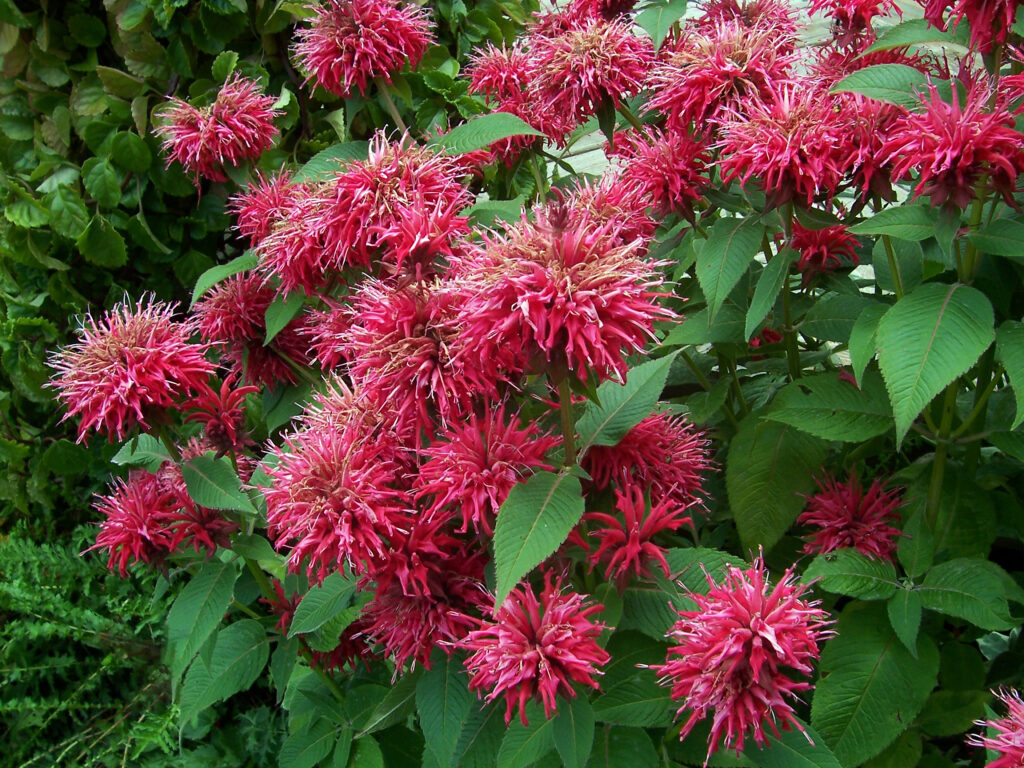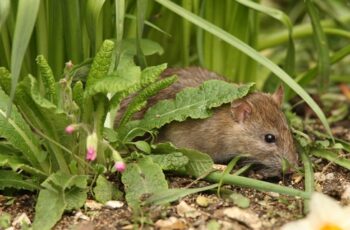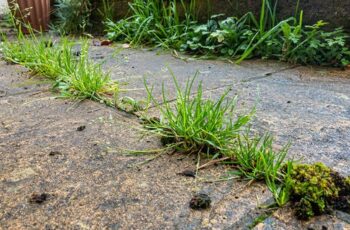Ad Blocker Detected
Our website is made possible by displaying online advertisements to our visitors. Please consider supporting us by disabling your ad blocker.
Bee balm, a North American native, is a tall perennial herb with various names. Its botanical name is Monarda, but it is also known as bergamot due to its citrus-like scent resembling the orange fruit bergamot. Additionally, it is referred to as Oswego tea, as the leaves were used by the Oswego Indians to make tea.
With a refreshing minty fragrance, the leaves are commonly used for brewing tea and can also be added to salads and jellies. The vibrant blooms of bee balm display a colorful and untamed appearance, making it suitable for both herb gardens and perennial borders.
Where to Plant Monarda–Bee Balm
- Ideal Placement: Bee balm thrives in partial shade, although it can also handle full sun. It is recommended to plant it in an area with good air circulation to minimize the risk of powdery mildew affecting the leaves during late summer.
- Soil Preparation: For optimal growth, bee balm should be planted in moist, well-drained soil that is rich in organic matter. Aim for a soil pH between 6.5 and 8. Prior to planting, enhance the planting beds by incorporating a couple of inches of aged compost or commercial organic planting mix and thoroughly mixing it into the soil.

When to Plant Monarda–Bee Balm

Monarda
- Indoor Seed Starting: To initiate the growth of bee balm, begin sowing the seeds indoors approximately 8 weeks prior to the final frost of spring. Utilize flats or pots and provide fluorescent lights for optimal germination. Maintain the seed starting mix at a temperature of around 55°F.
- Transplanting to the Garden: Once the bee balm plants have developed strong roots, transplant them to the garden approximately one week before the last spring frost. This can be done with both seedlings and rooted cuttings, ensuring they are transferred outdoors during late spring.
- Outdoor Planting Time: For outdoor sowing of bee balm seeds, it is advisable to wait until mid-spring when all risks of frost have subsided.
How to Plant Monarda–Bee Balm
Seed Needs, Wild Bee Balm Seeds for Planting (Monarda fistulosa) Twin Pack of 400 Seeds Each – Heirloom & Open Pollinated – Attracts Pollinators
- Planting Depth: When sowing bee balm seeds, bury them at a depth of ¼ to ½ inch in the soil.
- Spacing: Allow a spacing of 12 inches between individual plants. Bee balm tends to grow in clumps and spreads rapidly, so each clump may require a space of at least two square feet or more.
- Plant Quantity: If you intend to use bee balm for tea or preservation purposes, it is recommended to cultivate six bee balm plants.
Companion Planting Monarda–Bee Balm
- Companion Planting with Monarda – Bee Balm: Bee balm is known to promote the growth of tomatoes and peppers. It also attracts butterflies, bees, and hummingbirds. For companion planting, consider planting bee balm alongside sweet woodruff.
Watering and Feeding Monarda–Bee Balm
- Watering: Bee balm thrives with moderate watering. It is advisable to water the plants when the soil begins to dry out. While bee balm can tolerate dry soil and is less likely to become invasive in such conditions, it will grow more luxuriantly with sufficient water.
- Feeding: In the spring, spread a layer of compost measuring about ½ inch thick over the planting bed. Additionally, provide nourishment to the plants by applying a general-purpose balanced fertilizer like 10-10-10 during midsummer.
Monarda–Bee Balm Care and Maintenance
- Care: It is important to be vigilant and remove any new sprouts that appear. Bee balm can develop invasive mats of shallow roots, particularly in moist soil. To prevent the spread of roots, consider placing metal barriers around the root clumps. Periodically trim back the plants to maintain their compactness. Dividing the plants every 3 or 4 years is recommended to control their rapid spread. For those desiring fall blooms, prune the plants back to a few inches above the ground after the initial flowering.
- Mulching: To safeguard the roots from cold and snow during winter, apply a layer of mulch over the bee balm plants.
Container Growing Monarda–Bee Balm
- Container Cultivation: Bee balm is suitable for container gardening, either as a single plant in a smaller container or as a group of plants in a larger container or tub. Towards the end of summer, the plants may shed their lower leaves and appear leggy.
- Winter Care: Bee balm exhibits cold and hardy characteristics but tends to die back during chilly weather. While container-grown plants can be brought indoors during winter, it is unlikely that they will flower during this time.
Monarda–Bee Balm
- Pests: Bee balm typically remains free from pest infestations.
- Diseases: Rust and powdery mildew can affect bee balm, especially in late summer. To combat these diseases, ensure proper air circulation around the plants, maintain appropriate spacing between them, and trim the plants down to the ground after flowering. These measures help control and prevent powdery mildew and rust.
How to Harvest Monarda–Bee Balm
- Harvesting Time: Harvest bee balm leaves as per your requirement. For optimal flavor, gather the leaves before the flower buds fully open.
- Harvesting Method: If you intend to dry a substantial amount of bee balm, cut the stems about one inch above the ground before they start blooming in early summer, and repeat this process in late summer. When drying the flowers, cut them when they are nearly fully open. After flowering, cut the plants down to around 1 inch above the ground. This practice encourages new growth and promotes a second round of flowering.
Monarda–Bee Balm Varieties to Grow
There are several cultivars of bee balm available, including:
- ‘Cambridge Scarlet‘: Features vibrant red blooms on leafy spikes. ( Cambridge Scarlet Seeds here)
- ‘Croftway Pink‘: Displays lovely pink blossoms.
- Lemon mint: Exhibits pink-purple blooms. (Lemon mint bee balm seeds)
- ‘Marshall’s Delight’: Showcases pink blooms and possesses resistance to powdery mildew.
- ‘Raspberry Wine‘: Boasts scarlet flowers with lilac undertones. (Raspberry Wine bee balm seeds)
- Wild bergamot (Monarda fistulosa): Offers lavender flowers and emits a powerful fragrance. (Wild bergamot bee balm seeds)
Monarda–Bee Balm in the Kitchen
- Flavor and Aroma: Bee balm possesses a minty taste and aroma with delightful citrus undertones of orange and lemon. Some individuals even liken its scent to that of Earl Grey tea.
- Usage of Fresh Flowers and Leaves: Incorporate fresh bee balm flowers and leaves into various culinary creations such as fruit dishes, salads, teas, lemonades, pork recipes, poultry dishes, and jellies.
- Leaves: Sprinkle fresh bee balm flowers over salads to add a burst of flavor. Utilize whole or chopped fresh leaves to enhance the taste of duck, pork, sausages, and curries.
- Flowers: Enhance salads by adding bee balm flowers, which offer a taste reminiscent of oregano. Sprinkle the petals on salads or freshly baked pizzas for an added zing.
- Teas: Both fresh bee balm leaves and flowers are excellent for brewing teas. They can be used alone or combined with other herbs. Inhaling the steam produced by steeping bee balm leaves in boiling water can provide relief for a sore throat.
- Culinary Complements: Bee balm’s citrusy flavor perfectly complements a variety of fruits, including strawberries, apples, oranges, tangerines, and melons. Ground-dried leaves and flowers can be used as a substitute for oregano and marjoram in recipes.
Preserving and Storing Monarda–Bee Balm
- Drying: To dry bee balm leaves, remove them from the stems and place them on screens or drying trays. Allow them to dry for approximately two to three days in a warm and shady location. Alternatively, you can use a dehydrator to dry the leaves. If using a fine mesh bag, both leaves and flowers can dry within 2 to 7 days.
- Refrigerator Drying: Another method for drying bee balm leaves is to spread them evenly on a baking sheet covered with paper towels and place them in the refrigerator. The cool temperature will aid in the drying process.
Monarda–Bee Balm Propagation
- Bee balm can be grown through various methods, including seed, cuttings, and divisions.
- Seed: For optimal germination, it is recommended to stratify (refrigerate) bee balm seeds for three months before sowing. Germination typically occurs within 14 to 21 days. Start seeds indoors and then transplant the seedlings outdoors.
- Division: Divide bee balm plants either in the fall or spring. It is advisable to divide the plants as soon as the clumps grow larger, at least every three years. Replant the divisions in soil enriched with aged compost. Since the center of the plants tends to die, divisions should be taken from the outer edges of the clumps.
- Cuttings: Root tender tip cuttings of bee balm in early summer. Dip the cut ends in a rooting hormone and plant them in an organic potting mix.
- Layering: Another propagation method for bee balm is layering. When stems touch the ground, they develop roots and can be divided to create new plants.

